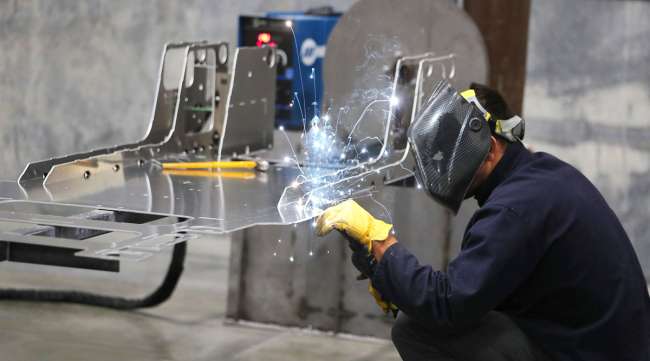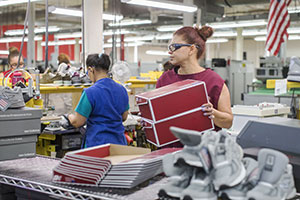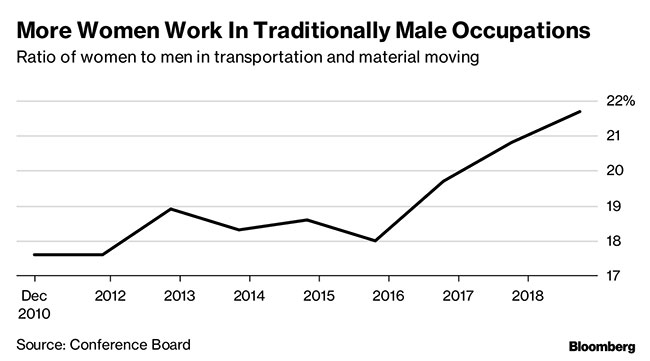Blue Collar Worker Shortage Reshapes Labor Market

A surprise shortage of blue collar workers is changing the contours of the U.S. labor market, boosting their pay, narrowing wage inequality and drawing more women into those jobs.
The shortfall is being driven by a shrinking supply of manual and low-pay service workers as the labor force becomes more educated and less willing to take on such jobs, according to a new Conference Board study.
“The divergence between blue collar and white collar supply is going to persist and even become bigger through 2030,” said Gad Levanon, chief economist for North America at the New York-based research group and one of the authors of the report.
That is likely to keep upward pressure on labor costs in such industries as construction, transportation and accommodation and food services. It also has implications for inflation and for the Federal Reserve as Chairman Jerome Powell and his colleagues try to sustain the 9½-year-old expansion without overheating the economy. Unemployment at 3.7% is the lowest since 1969 and running well below Fed estimates for its long-run sustainable rate.
“The acute shortage of talent in the blue collar space is very, very pronounced,” said Peter Quigley, executive vice president at Kelly Services Inc., a staffing company with branches in all 50 states.

Manufacturers and other companies with physically demanding jobs are finding it tough to fill those positions when baby boomers retire. “It’s harder and harder to attract younger people into those jobs, either because they’re pursuing education alternatives or the stigma associated with light industrial work,” Quigley said.
The supply of lower-skilled workers also is being squeezed by growth in the number of Americans who have claimed disability benefits and dropped out of the labor force. Exacerbated by the opioid epidemic, that’s much more concentrated in the population without a bachelor’s degree, the Conference Board report says.
Tighter restrictions on immigration also are playing a role and will continue to do so in the future, said Moody’s Analytics Inc. Chief Economist Mark Zandi. Many of those foreign workers are lower-skilled and in industries such as construction and farming.

Female factory workers are in short supply. (Scott Eisen/Bloomberg News)
Automation and off-shoring were widely expected to devastate demand for industrial workers and depress their pay, especially when compared with their more educated counterparts. But that hasn’t happened, at least so far, according to the Conference Board: Blue collar and low-pay services jobs have grown as rapidly as total employment since the economy began recovering in June 2009.
For much of this expansion, manufacturers and other companies have been slow to ramp up capital spending and step up automation, opting instead to take on more workers to meet rising demand for their products and services.
That’s been reflected in the slow growth of productivity: Output per hour worked has risen at an annual average rate of 1.2% since the recession ended in June 2009, well below the 2.2% post World War II pace.
Companies also may be approaching the limits of how much of their operations they’re willing or able to outsource. “We’re probably in the third and maybe fourth cycle of outsourcing,” Quigley said. “Most of the large companies, if they were going to outsource, they’ve already done it.”
The combination of surprisingly robust demand for blue collar workers and their limited supply is forcing companies to increase pay at the bottom end of the scale. Minimum wage increases also have helped those less well-off.
That’s helping to reverse the decades long trend toward greater wage inequality, according to Levanon, who co-wrote the report with economist Frank Steemers.

Besides granting bigger wage increases, companies are getting creative in offering other perks to employees, including more breaks, rejigged work schedules and greater flexibility for working parents, Quigley said.
The improved packages look to be attracting more women into blue collar jobs. “It helps remove some of the inhibitions or reluctance” some women may have in taking those positions, Levanon said.
The increase in female participation is particularly evident in the transportation sector, where demand for workers has taken off because of the growth of online shopping. “It’s probably ground zero for labor shortages,” Levanon said.
“Lower income workers are doing better,” Moody’s Zandi said. “The balance of power has shifted from employers to employees.”

